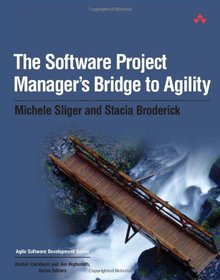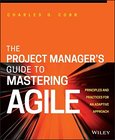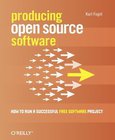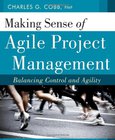The Software Project Manager's Bridge to Agility

Book Details:
| Publisher: | Addison-Wesley Professional |
| Series: | Addison Wesley |
| Author: | Michele Sliger |
| Edition: | 1 |
| ISBN-10: | 0321502752 |
| ISBN-13: | 9780321502759 |
| Pages: | 384 |
| Published: | May 29 2008 |
| Posted: | Nov 19 2014 |
| Language: | English |
| Book format: | CHM |
| Book size: | 4.45 MB |
Book Description:
When software development teams move to agile methods, experienced project managers often struggle-doubtful about the new approach and uncertain about their new roles and responsibilities. In this book, two long-time certified Project Management Professionals (PMPRs) and Scrum trainers have built a bridge to this dynamic new paradigm. They show experienced project managers how to successfully transition to agile by refocusing on facilitation and collaboration, not 'command and control.' The authors begin by explaining how agile works: how it differs from traditional 'plan-driven' methodologies, the benefits it promises, and the real-world results it delivers. Next, they systematically map the Project Management Institute's classic, methodology-independent techniques and terminology to agile practices. They cover both process and project lifecycles and carefully address vital issues ranging from scope and time to cost management and stakeholder communication. Finally, drawing on their own extensive personal experience, they put a human face on your personal transition to agile--covering the emotional challenges, personal values, and key leadership traits you'll need to succeed. Coverage includes Relating the PMBOKR Guide ideals to agile practices: similarities, overlaps, and differences Understanding the role and value of agile techniques such as iteration/release planning and retrospectives Using agile techniques to systematically and continually reduce risk Implementing quality assurance (QA) where it belongs: in analysis, design, defect prevention, and continuous improvement Learning to trust your teams and listen for their discoveries Procuring, purchasing, and contracting for software in agile, collaborative environments Avoiding the common mistakes software teams make in transitioning to agile Coordinating with project management offices and non-agile teams 'Selling' agile within your teams and throughout your organization For every project manager who wants to become more agile. Part IAn Agile Overview 7 Chapter 1What is "Agile"? 9 Chapter 2Mapping from the PMBOKR Guide to Agile 25 Chapter 3The Agile Project Lifecycle in Detail 37 Part IIThe Bridge: Relating PMBOKR Guide Practices to Agile Practices 49 Chapter 4Integration Management 51 Chapter 5Scope Management 67 Chapter 6Time Management 83 Chapter 7Cost Management 111 Chapter 8Quality Management 129 Chapter 9Human Resources Management 143 Chapter 10Communications Management 159 Chapter 11Risk Management 177 Chapter 12Procurement Management 197 Part IIICrossing the Bridge to Agile 215 Chapter 13How Will My Responsibilities Change? 217 Chapter 14How Will I Work with Other Teams Who Aren't Agile? 233 Chapter 15How Can a Project Management Office Support Agile? 249 Chapter 16Selling the Benefits of Agile 265 Chapter 17Common Mistakes 285 Appendix AAgile Methodologies 295 Appendix BAgile Artifacts 301 Glossary 321 Bibliography 327 Index 333
Download Link:
Related Books:
The Project Manager's Guide to Mastering Agile
Principles and Practices for an Adaptive Approach
Streamline project workflow with expert agile implementation The Project Management Profession is beginning to go through rapid and profound transformation due to the widespread adoption of agile methodologies. Those changes are likely to dramatically change the role of project managers in many environments as we have known them and raise the bar for the entire project management profession; however, we are in the early stages of that transformation and there is a lot of confusion about the impact it has on project managers: There are many stereotypes and misconceptions that exist about both Agile and traditional plandriven project management, Agile and traditional project management principles and practices are treated as separate and indepen...
Producing Open Source Software
How to Run a Successful Free Software Project
The corporate market is now embracing free, "open source" software like never before, as evidenced by the recent success of the technologies underlying LAMP (Linux, Apache, MySQL, and PHP). Each is the result of a publicly collaborative process among numerous developers who volunteer their time and energy to create better software. The truth is, however, that the overwhelming majority of free software projects fail. To help you beat the odds, O'Reilly has put together Producing Open Source Software, a guide that recommends tried and true steps to help free software developers work together toward a common goal. Not just for developers who are considering starting their own free software project, this book will also help those who want to pa...
Making Sense of Agile Project Management
Balancing Control and Agility
The book is intended to provide a much deeper understanding of agile principles, methodologies, and practices to enable project managers to develop a more agile approach and understand how to blend and tailor agile and traditional principles, methodologies, and practices to create an appropriate balance of control and agility to fit a business environment as well as the risks and complexities of any individual project. The book will also provide business managers and leaders an understanding of how to fit agile methodologies into an overall business strategy that provides the right balance of control and agility for their business....
2007 - 2021 © eBooks-IT.org



